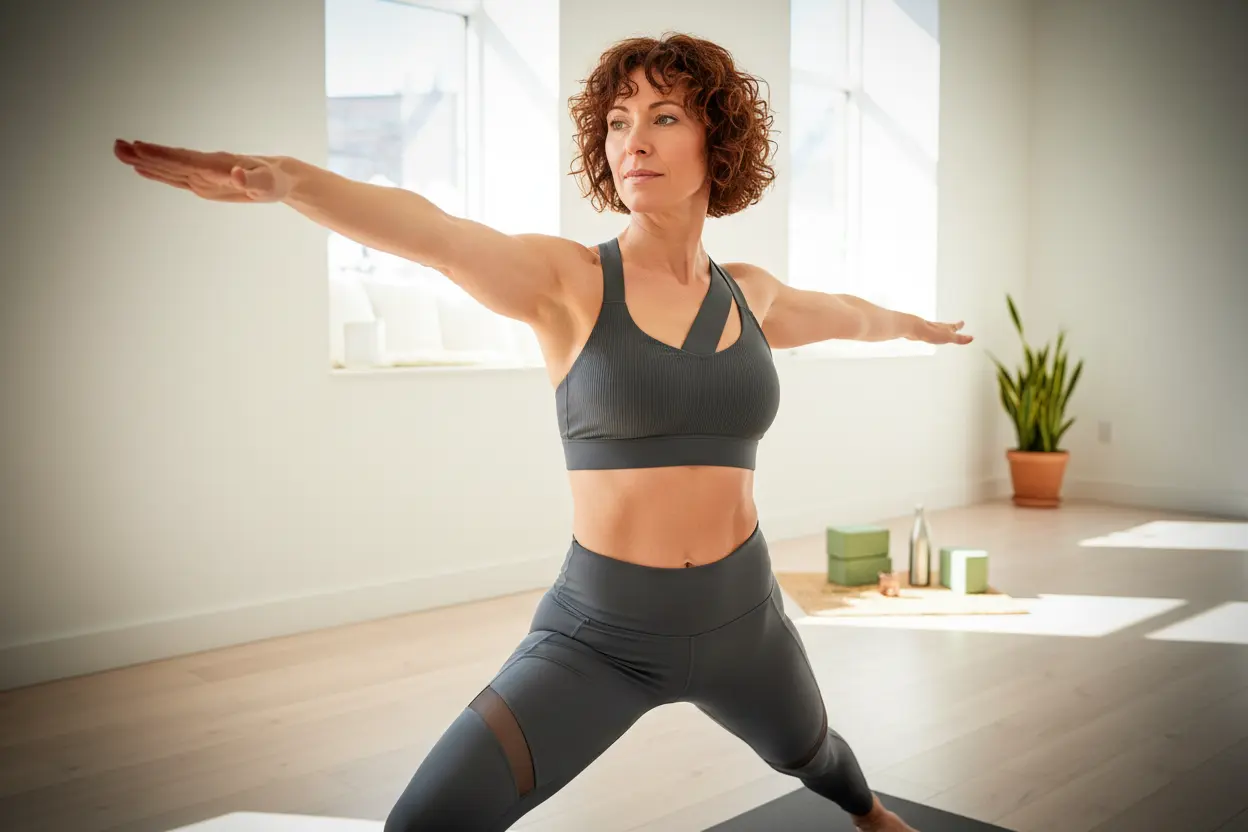Think walking is the go-to for staying healthy after 60? Think again! There’s another sport that might just give your joints—and your sense of surprise—a good stretch: yoga. While it may not involve pounding the pavement around the block, it certainly gives your entire body a lift. Let’s unravel why yoga could be your secret weapon for well-being in your golden years (and why you don’t need to learn Sanskrit to get started).
The Importance of Staying Active After 60
- When you hit 60, staying physically active is essential to keep your mobility and health in check.
- Many doctors or friendly neighbors will urge you to take up walking, but there’s an even better option on the horizon.
- Enter yoga: not only does it support your basic fitness, but it brings age-tailored benefits that you’ll soon wonder how you lived without.
Why Yoga? More Than Just Flexibility
As the years go by, our bodies start sending us little reminders of time’s passage—think muscle aches and creaky joints (yes, even when getting out of your favorite armchair). Many people find themselves shifting away from jogging due to back pain, only to stumble upon yoga and realize it’s the loyal sidekick they’ve been waiting for. Unlike high-impact sports, yoga supports mobility while also strengthening muscles and safeguarding joints. Who said you need to run like the wind to feel young?
Yoga is a full-body discipline, making it a particularly smart pick for those over 60. Practices like heated vinyasa or Sculpt and Flow—which cleverly blend strength and cardio—are especially effective. They help maintain your energy (and maybe even outpace your grandkids), while also ramping up your flexibility and muscle strength.
Finding Balance: Flexibility, Strength, and Protection
Sure, stretching like a cat is great, but after 60, muscles naturally start losing strength. This can stir up trouble with posture and make daily mobility challenging. That’s why mixing dedicated muscle-strengthening exercises into your routine matters—think light strength sessions at least twice a week. The key is to strike a happy balance between keeping limber and staying strong.
- Yoga is fantastic for stretching and mobilizing the body.
- For best results, complement yoga with strength work focusing on legs, arms, and core.
- Regular strength sessions boost mobility and posture, keeping you upright and confident.
One of yoga’s star qualities is its knack for building muscle while protecting joints and bones. With regular practice, you can help prevent joint pain (yes, even the aches associated with arthritis) and keep bone density up—something that becomes more crucial as the candles multiply on your birthday cake. All those stretches and poses? They also encourage joint lubrication, reducing stiffness and those notorious twinges.
Practicing Yoga Safely and Effectively
If you’ve ever wondered if you’re striking the right pose, you’re not alone! Practicing yoga with good posture isn’t just for show-offs—it’s essential for reaping all the benefits without risking injury. Whether you prefer a group class in a cozy studio or follow online expert videos from your living room, always aim to position yourself correctly. Choose classes that match your current fitness level, and don’t hesitate to ask your instructor for modifications to suit your needs. Remember: proper technique is your ticket to joint and muscle happiness. Yoga is about progress, not perfection, so give yourself permission to adapt and enjoy.
In short, yoga truly shines as a sport for life after 60. It keeps you fit, strengthens muscles, and protects those precious joints. Want a nearly perfect recipe for long-lasting well-being? Stir in some light strength training to your yoga routine and discover a balanced workout that benefits your whole self. Here’s to strong muscles, limber joints, and a little extra peace at every age!

John is a curious mind who loves to write about diverse topics. Passionate about sharing his thoughts and perspectives, he enjoys sparking conversations and encouraging discovery. For him, every subject is an invitation to discuss and learn.






